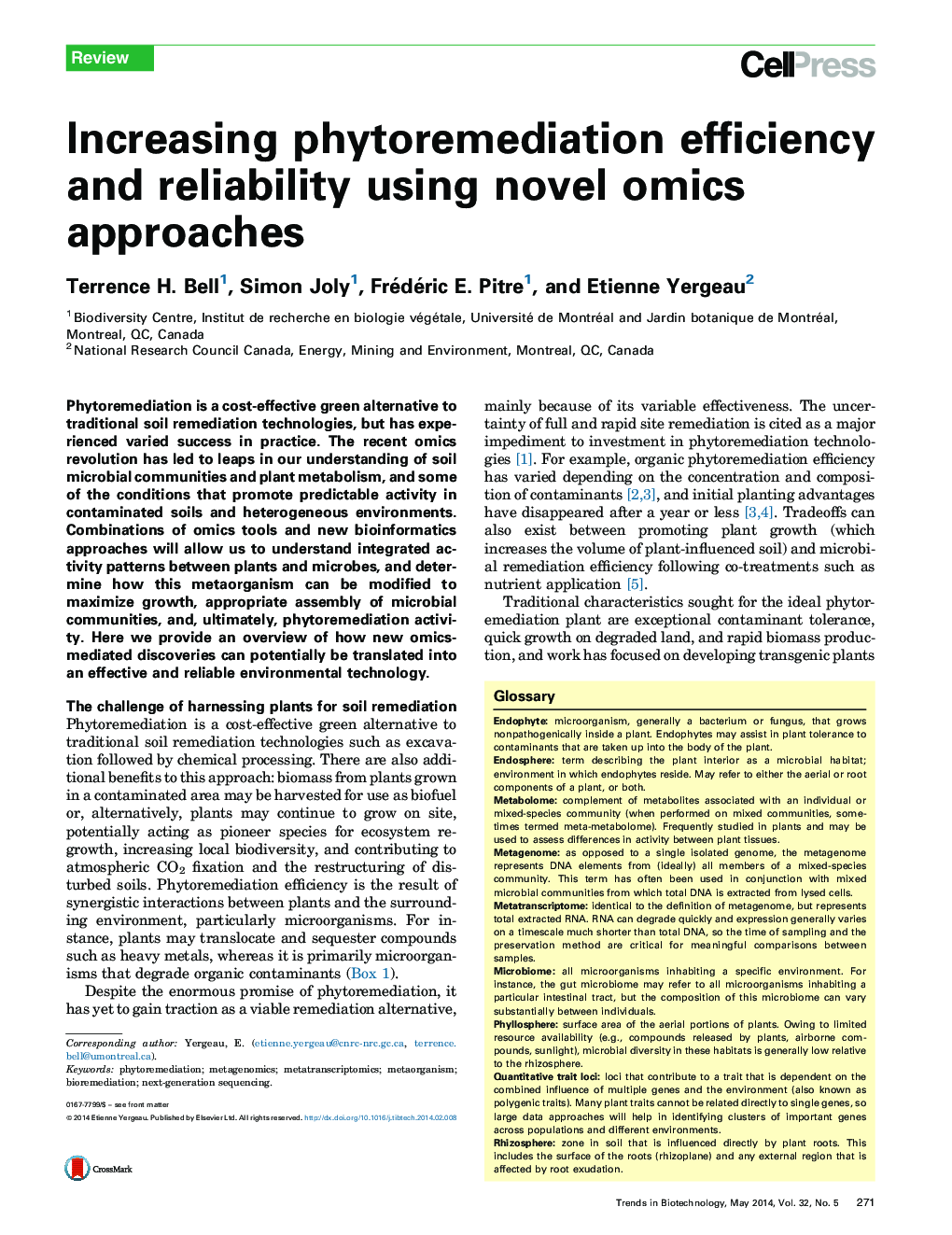| Article ID | Journal | Published Year | Pages | File Type |
|---|---|---|---|---|
| 37108 | Trends in Biotechnology | 2014 | 10 Pages |
•New omics technologies have led to leaps in our understanding of plants and microbes.•High-throughput analyses are defining heterogeneity and predictability in activity.•Phytoremediation potential may be best assessed by taking a metaorganism approach.
Phytoremediation is a cost-effective green alternative to traditional soil remediation technologies, but has experienced varied success in practice. The recent omics revolution has led to leaps in our understanding of soil microbial communities and plant metabolism, and some of the conditions that promote predictable activity in contaminated soils and heterogeneous environments. Combinations of omics tools and new bioinformatics approaches will allow us to understand integrated activity patterns between plants and microbes, and determine how this metaorganism can be modified to maximize growth, appropriate assembly of microbial communities, and, ultimately, phytoremediation activity. Here we provide an overview of how new omics-mediated discoveries can potentially be translated into an effective and reliable environmental technology.
